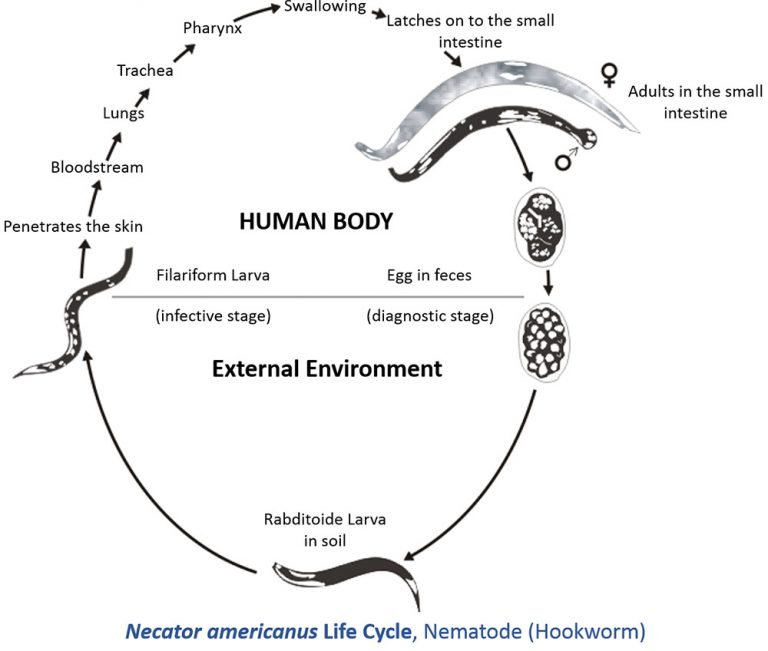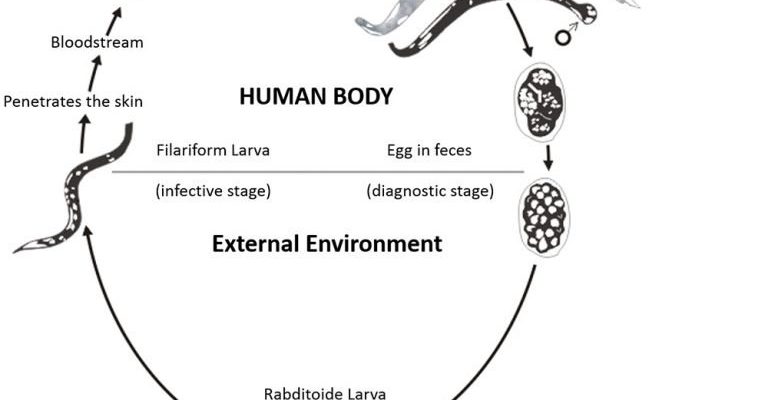
Think of hookworms as tiny, sneaky travelers. They start their journey in one host, but through reproduction, they keep finding new hosts to invade. This all begins with mating, a process filled with its own set of challenges. If you’re curious about how these creatures manage this complex cycle, grab a cup of coffee, and let’s dive in!
How Do Hookworms Mate?
Hookworm mating is a bit like a dance happening in a dark and damp environment. Most hookworm species, including *Ancylostoma duodenale* and *Necator americanus*, have separate sexes—meaning there are male and female hookworms. The males are generally smaller and have some special adaptations to help them grasp onto the female during mating.
Once a male finds a female, they engage in copulation, which can last several hours. During this time, the male attaches himself to the female and transfers sperm. Honestly, it might not sound that romantic, but for hookworms, this is essential for reproduction. The female can store the sperm for a while, allowing her to fertilize her eggs at a more optimal time.
After mating, the female sets off to lay thousands of eggs. This brings us to the next stage of the life cycle. You might be wondering how many eggs a single female can produce. Well, it’s quite impressive—she can lay up to 30,000 eggs in a day! That’s a staggering figure when you think about how quickly these creatures can populate.
Hookworm Egg Production
Once the female hookworm has mated, she starts laying eggs in the host’s intestines. These eggs are then passed out with the host’s feces into the environment. The eggs are oval-shaped and about 60 to 75 micrometers in size, but don’t let their small size fool you; they have a big impact.
After a couple of days in warm, moist soil, the eggs hatch into larvae. This is where things get interesting! The larvae undergo several developmental stages before they can infect a new host. This part of the cycle is crucial because it’s when the larvae are most vulnerable. They rely on their environment to survive and thrive before they can find a new host.
Why is this important? Well, it means that hookworms are highly dependent on environmental conditions. If it’s too dry or cold, their life cycle could be disrupted. However, in optimal conditions—think warm, moist soil—they can survive for weeks or even months, waiting for a host to come along.
Life Cycle of Hookworm Larvae
The transition from egg to larvae is just the beginning of a fascinating life cycle. After hatching, the larvae go through two main stages: rhabditiform and filariform. The rhabditiform larvae are free-living and can feed on bacteria in the soil. They’re not harmful in this stage—they’re just trying to grow up!
After a few days, they transform into the infectious filariform larvae. This stage is important because it’s when they become capable of piercing through human skin. If a person walks barefoot on contaminated soil, the filariform larvae can enter the body, usually through the skin of the feet. It’s shocking how a simple stroll outside can lead to such a complex invasion!
Once inside, the larvae migrate through the bloodstream to the lungs, then travel up the respiratory tract. This sounds like quite a journey, doesn’t it? Eventually, they are swallowed and make their way into the intestines, where they mature into adult hookworms. This elaborate journey is one of the reasons why hookworms have such a significant impact on human health.
How Do Hookworms Impact Human Health?
You might be wondering, “What’s the big deal with hookworms?” Well, when they invade the human body, they can cause various health issues. They feed on blood, and that can lead to anemia and protein deficiency. In fact, these parasites are a major cause of iron deficiency anemia in affected populations, particularly in tropical and subtropical regions.
One reason they have such a stronghold in certain areas is that conditions can favor their life cycle. Poor sanitation, warm climates, and walking barefoot are all factors that can increase the risk of hookworm infection. Imagine living in a community where walking outside barefoot is a norm—hookworms can spread rapidly in such environments.
Interestingly, researchers are investigating potential benefits of hookworm infections. Some studies suggest that hookworms might help modulate the immune system, offering insights for autoimmune diseases. This brings a whole new layer to our understanding of these creatures and their relationship with humans!
Prevention and Control of Hookworm Infections
Preventing hookworm infections is pretty straightforward but requires some community effort. Here are a few important steps to reduce the risk of infection:
- Good sanitation: Ensuring proper waste management can significantly lower the number of hookworm eggs in the environment.
- Wear shoes: Encouraging people, especially children, to wear shoes in areas where hookworms are common can help prevent larvae from entering through the skin.
- Regular health checks: Conducting regular screenings in vulnerable communities can help identify and treat infections early.
Education is also key. By raising awareness about how hookworms spread and the importance of hygiene, communities can empower themselves to tackle this issue together.
Hookworm reproduction is a fascinating and complex process that plays a crucial role in the survival of these tiny parasites. From mating to egg production and the development of larvae, each step highlights how resilient and adaptable these creatures are. Understanding their life cycle not only sheds light on the challenges they pose to human health but also opens the door to potential solutions and preventative measures.
As we’ve seen, hookworms are more than just a nuisance; they illustrate the intricate balance of life in our ecosystems. By taking steps to prevent infections, we can reduce their impact and promote better health for everyone. So, the next time you think about stepping outside, remember the hidden world of hookworms beneath your feet!

